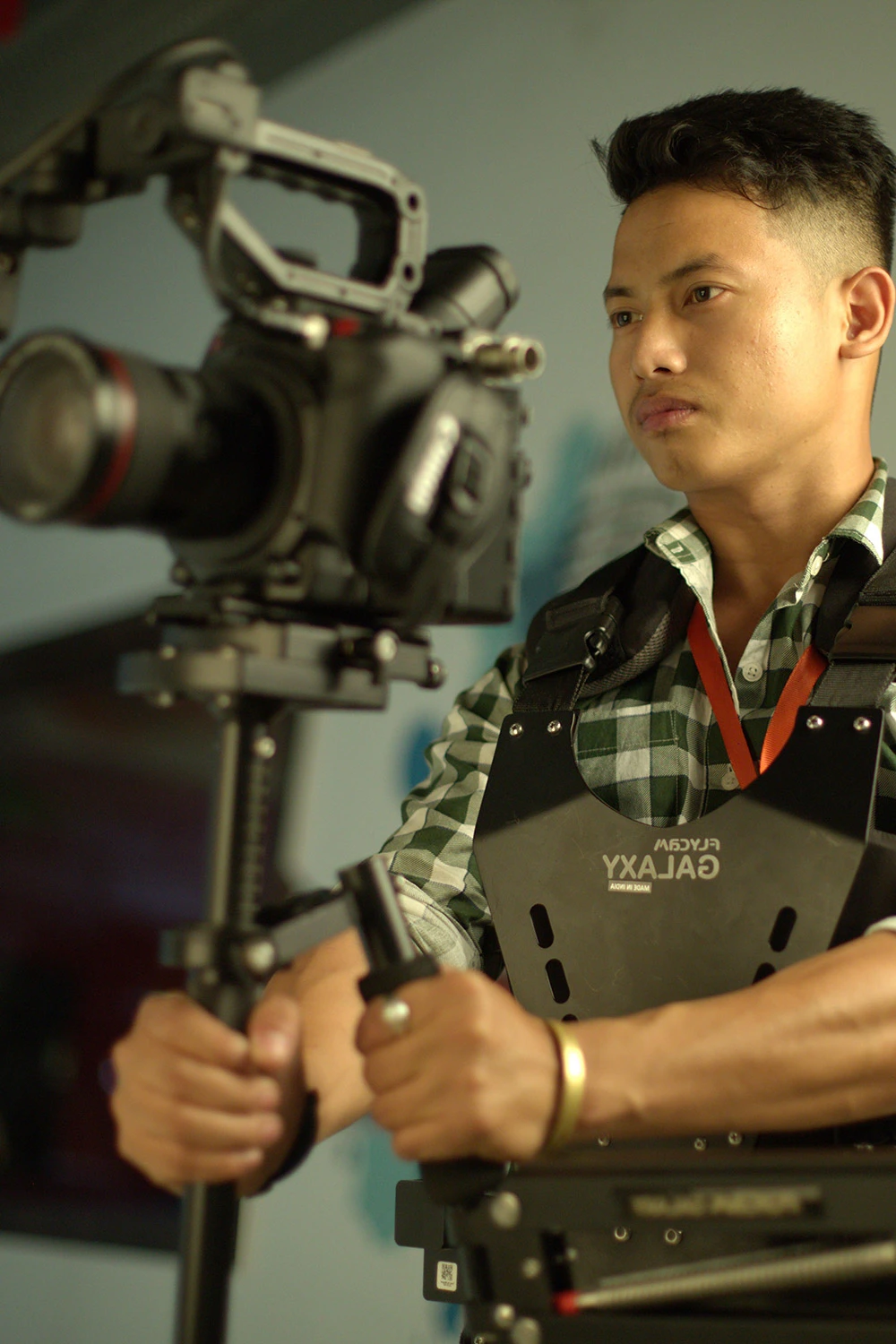This course focuses on the applications of sound and audio technology in visual media while providing a solid foundation in both. The course begins with introduction to basic recording procedures and gradually moves towards making you learn about post-production principles, as well as how to edit, augment, and alter sound to complement the desired meaning and story, through hands-on learning experience. The study of sound-image interactions serves as a foundation for learning established procedures and tools for bridging the gap between artistic intent and fulfilling current industry requirements. You become more self - centered through the course as you delve deeper into current industry trends and techniques. Sound design necessitates a thorough understanding of sound’s physical properties. This course teaches students the physics of audio, focusing on the differences between analog and digital audio. The course also teaches students team work as they get to collaborate with their classmates for combined projects. This is because working collaboratively and in teams is an important part of the industry. You’ll learn how to record distinctive audio narratives using cutting-edge technology in a curriculum that mirrors the aesthetics, techniques, and process of commercial media creation. Faculty with decades of experience and skill will lead you through this curriculum. It prepares you to become award-winning sound professionals. You will be taught by faculty members who are industry experts and seasoned professionals with years of experience. Students will be able to develop advanced techniques in sound editing and sound mixing and explore the creative and technical aspects of sound in film, video, video games, radio, and emerging media. Emphasis is also laid on the technical aspects like wave theory, software signal path and editing tools, audio processing techniques. The course explores creative factors like layering and mixing sounds; synchronizing music to picture; creative sound recording techniques; methods of spotting picture for sound design etc. Students will also have access to audio post-production facilities to prepare, design, record, edit and mix a variety of sound projects. In order to broaden their imaginative and practical experiences in sound design, students are engaged in workshops and assigned full production responsibilities. In addition to supporting the students with academics, our faculty members are also active members of the industry. They ensure that the students benefit from their network as over the years, the sound industry has expanded much beyond the music roots. You’ll also get to put your concepts, theory, and tools to use in projects that entail editing background audio, Foley, dialogue, and sound effects. All of these components are intended to improve current approaches to sound design for linear and interactive media by combining theory and advanced practices. During the course, the students will be taught the conceptual, creative, and technical skills needed to create and integrate audio elements into a production, while encouraging sound experimentation during the process. Upon the completion of the course, you will be prepared to take up challenging roles across industries. This is because our curriculum is industry ready, focused on providing you a forward-looking learning experience and in sync with the ever- evolving industry.
Sound Engineering (1 Year)
- Fundamentals of sound
- Introduction to microphones and preamps and small mixers.
- Signal processors.
- The decibels, sound perils.
- Acoustical climate.
- Digital Technology.
- Basic musicianship and theory studies.
- Introduction to pro tools. (DAW)
- Recording and mixing (song) (stereo)
- Mastering (Hardware based)
- Basics of sound designing (Library and Fuzzy based)
- Assignment and evaluation. (Final exam)
- Yamaha, reinforcement handbook.
- Pro-tools tutorial.
Multi-channel Surround Sound Mixing
- Basics of surround sound (Theory).
- Basic S1/T1 workflow and signal path.
- Track Laying.
- Mixing dialogs and effects.
- Mixing song and background music.
- Various automatic features.
- Final mixing (Re-recording).
- Creating M & E (Music and effects track).
- Final output (Surrounded and stereo down version).
Sound Designing- Foley, Sfx, Location Sound
- Sound for film (Production sound).
- Dialogs editing/lip syncing.
- Foley introduction and types of foley Footsteps and lives).
- SFX creative editing (SFX library).
- Layering SFX.
- Ambience ( Location sound)


